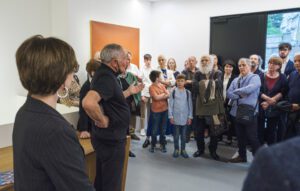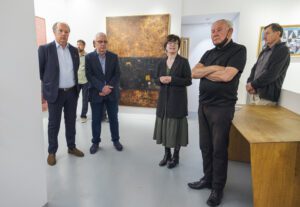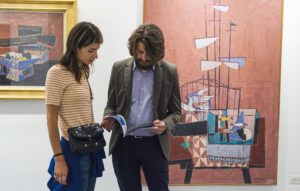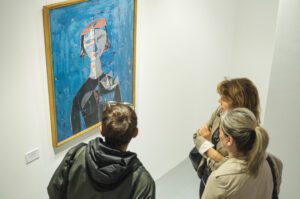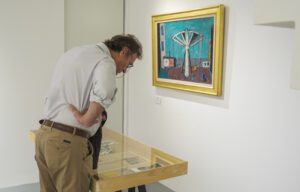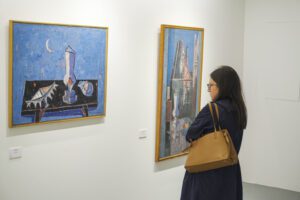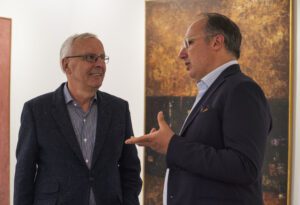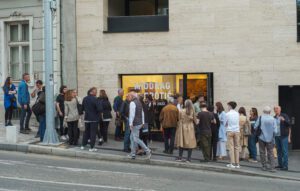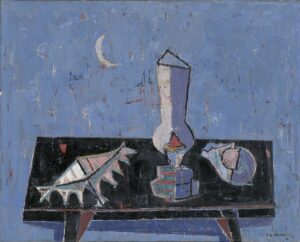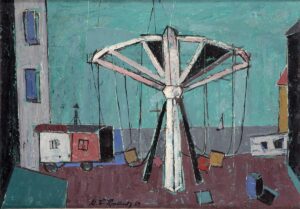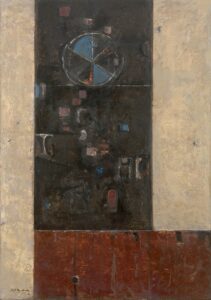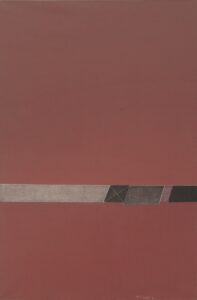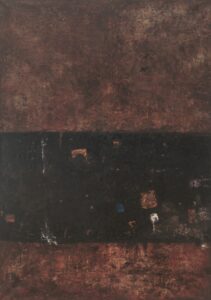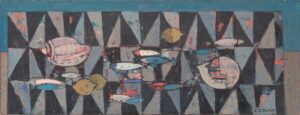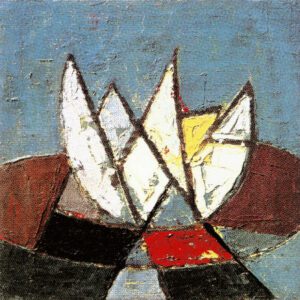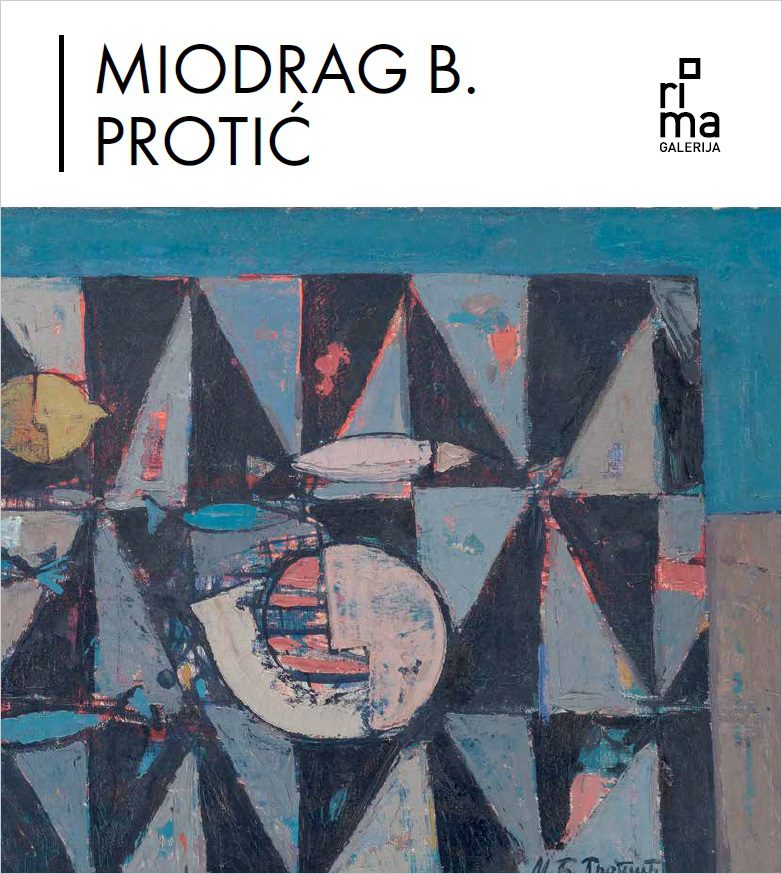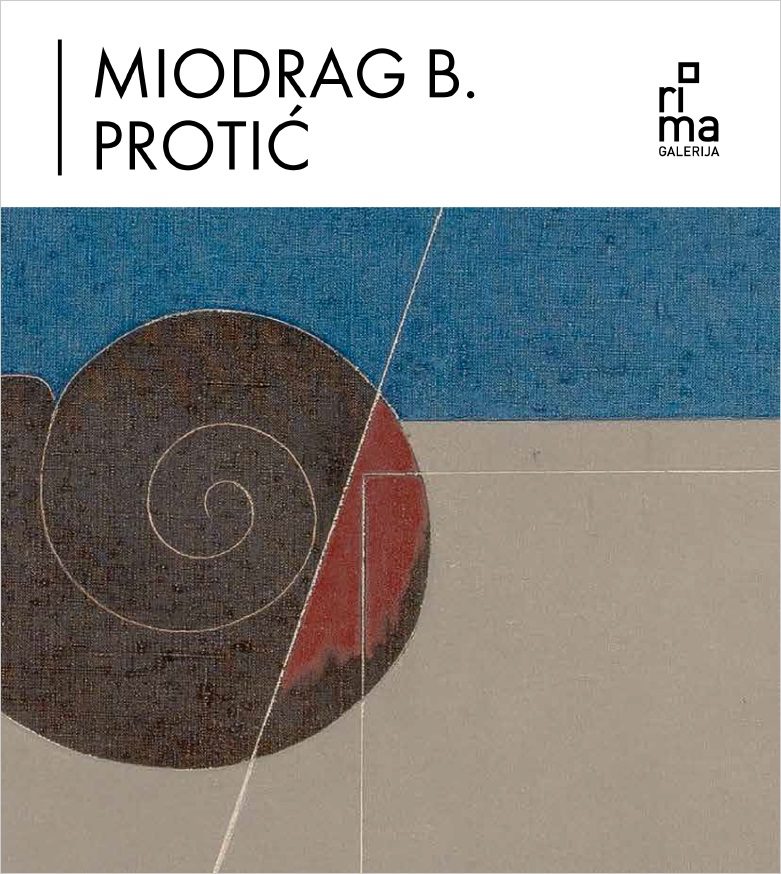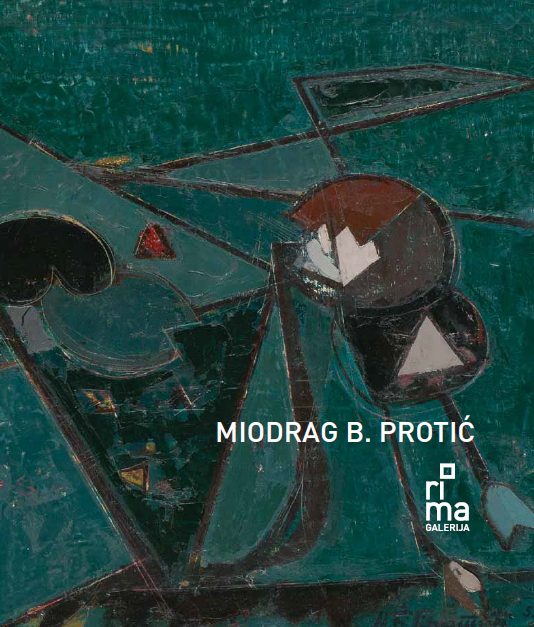Ješa Denegri
THE CONTRIBUTIONS AND ROLES OF MIODRAG B. PROTIĆ IN SERBIAN ART OF THE SECOND HALF OF THE TWENTIETH CENTURY
The direct reason for the exhibition of Miodrag B. Protić (Vrnjačka Banja, 1922 – Belgrade, 2014) in Gallery RIMA is the commemoration of one hundred years of his birth, the birth of a very important personality in Serbian culture in the second half of the twentieth century. This commemoration intends to remind again, to preserve and keep the memory of Protić’s many roles in the art of his immediate environment, where he was for a number of decades simultaneously a painter, an art critic, historian and theorist of modern art, polemist, author od memoirs, active participator in artistic processes, but above all, the founder and long-standing Director of the Museum of Contemporary Art, author of its first permanent display, numerous retrospectives and decadal shows of painting, sculpture and graphic prints in the Yugoslav region of that time. The environment in which he was active was aware of Protić’s painterly significance, as proven by retrospective exhibitions in the Museum of Contemporary Art (in 1982 and 2005/6), in the Gallery of the Serbian Academy of Sciences and Arts entitled Ars longa vita brevis (in 2011) and the two preceding solo shows: the first organised by Gallery RIMA, in Kragujevac (2015), dedicated to his painting in the 1950s and the second in Belgrade (2019), with his works from the 1960s and 1970s.
Talking on one occasion about his different vocations, Protić said the following: “I was always a painter when I painted, a writer when I wrote, a museologist when I was working on the programme of the Museum of Contemporary Art”. With all due respect to this personal understanding of his occupations, it seems possible to propound the thesis that Miodrag B. Protić was an integral personality of an artist and cultural worker, formed and active in the turbulent social, political and cultural circumstances, with concrete contributions and roles in Serbian art during the time of his full presence as an author.
As a painter and art critic, Protić took part in the early fifties in the process when the previously authoritative socialist regime was abandoned and when the continuity with the concepts and aesthetic reaches of inter-war local modernism was established. In 1951, in the weekly NIN he published the text Where Humanism Begins, Dogmatism Ends, on the occasion of the exhibition Seventy Paintings and Sculptures from 1920 to 1940. That same year he supported the “crucial” shift of Petar Lubarda towards post-war modernist understanding of the painterly language. As a painter, Protić began to exhibit his works in 1946. His first solo show was in 1956, when he was selected to participate as a Yugoslav representative at the 27th Biennale in Venice and where he was presented with the UNESCO award. He was a member of the December Group from 1955 to 1960. In 1955-56 he was engaged in theoretic polemics (accompanied with appropriate examples), with Grgo Gamulin in the magazine Delo, and in the magazine Savremenik he fully defended the legitimacy of abstract art. Protić regularly took part in many exhibitions of Yugoslav contemporary art abroad. He published his texts about the protagonists of local post-war art in his books Savremenici (The Contemporaries), 1955 and Savremenici II, 1965; he published his theoretic texts in his book The Painting and Meaning, 1960. In 1970 he published two volumes of Serbian Painting in the Twentieth Century but also numerous monograph studies, prefaces in the catalogues for “decadal” exhibitions of the Museum of Contemporary Art, between 1967 and 1980. Among other things, he wrote new evaluations of zenitism, Yugo-Dada and Belgrade surrealism in the visual arts. In 1979 he published his book Form and Time and in 1980-81 a collection of Ideas in Serbian Art Criticism and Theory 1900-1950, I-III (1980-81). He ended his literary career with books of memoirs Noah’s Ark – a View from the End of Century, I, 1992, II, 1996, and the second edition in 2000.
All of these data, alongside the others unrecorded in this short survey, belong to the facts of an entire life opus and in order to commemorate it, if at all possible to reduce it to one and only, one could apply the concept of “a subject of the world of art” within the context of post-war high enlightening modernism in the specific conditions of Serbian culture. In that, one should suppose that “subject” from the quoted concept assumes independent, active authorial behaviour and work, while the concept of “the world of art” assumes that the work is performed in a complex institutional cultural system where Protic participated in equal roles of an artist, critic, theorist and organiser of artistic life.
Although, in the mentioned polemic with Gamulin he supported the acknowledgement of abstract art, Protić believed, taking into account the essential characteristics of his own painting, that the trinomial “line-colour-object”, in other words, the object as an inevitable constitutive element of painterly terminology, fulfilled more completely and productively than pure abstraction all the requirements of the contemporary, objectively reduced painterly language. Therefore, he would always need, when working on a painting, an initial objective detail hidden in the titles of his pictures, such as Autumn Symphony, 1953, Lotuses, 1954, Cathedral, 1962, Imaginary Landscape, 1963, the triptych Red, Black and Yellow Moon, 1964, Gea, 1969, etc. all the way to the last cycle entitled Constellations from the 1980s and 1990s. So, in his painterly development, Protić covered the road from concrete landscapes to mental spaces, meaning that the facts taken from reality evolved from the facts of experience to symbolic entities that sublimated metaphysical and cognitive meanings outside and above the artist’s experiences. In order to find the adequate term to mark his own artistic procedure, he introduced the concept of the “semantic key” assuming the process from an object seen to the object as a mental sign, or as he wrote: “from the shell to the spiral, from asteroid to the circle, from hour-glass to triangle…”. In other words, according to the statement of the author the “semantic key” is an object reduced to a geometric sign, or “an essential element fitted into the concept of the whole”. Therefore, painting understood under the concept of “semantic key” has the position of a middle road between the extremes of recognisable genres of still-life and landscape, on the one hand, and a radical non-referential abstraction like informel and geometric minimalism, on the other; with such a stand, he was able to obtain satisfactory reception in the leading circles of moderate modernism.
(…)
(Complete text in printed edition)
Artworks
- More about the artist
